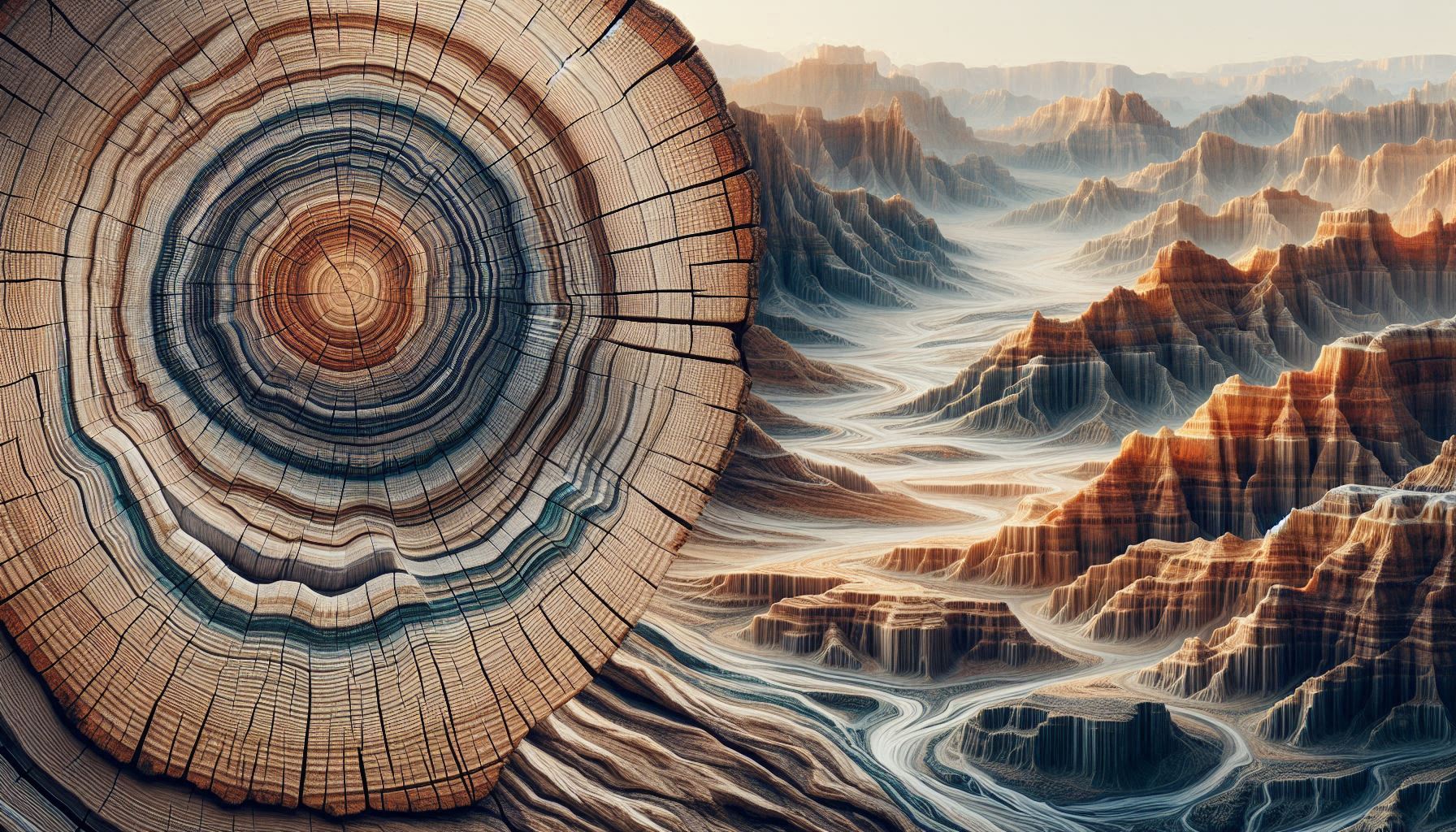While I was researching cyanobacteria, I learned that the number of days in a year in each era is engraved in layered rocks called stromatolites. So, in addition to tree rings and strata, there are other natural traces that record information about time and era.
Stromatolites are rocks that are piled up in layers by cyanobacteria fixing sediments in seawater with mucus at night, coming to the surface to avoid being buried, photosynthesizing during the day, and fixing the sediments again at night. As they grow toward the sun, forming a thin layer each day, the annual cycle is engraved as a curve.The number of layers between each year represents the number of days in a year at that time, and 850 million years ago, a year was 435 days long. The Earth’s rotation must have been faster than it is now.
https://umdb.um.u-tokyo.ac.jp/DKankoub/ouroboros/01_02/ganseki.html
Tree rings are concentric layers that form on the trunks of trees, and because growth is faster in spring and summer and slower in summer and autumn, they form a pattern with one layer per year. In addition to being able to tell the age of the tree, they also give us an idea of what the climate was like at the time. Similarly, corals and giant clams have layers called sun rings, and the difference in growth rate between day and night appears as a pattern. The curves in these sun rings reveal the annual cycle.
https://scienceportal.jst.go.jp/newsflash/20150306_01
A geological layer is made up of layers of sediments such as sand, gravel, and mud, and the sedimentary rocks that these solidify into. The further down you go, the older the layers become, and the sediments tell us about past environmental changes and the activity of living things. In addition to strata, there are also deposits that have sunk into lakes and the ocean floor.
The striped lake bottom sediments, known as varves, are formed by alternating deposition of dark layers from spring to autumn, where dead plankton sink, and light layers from autumn to winter, where yellow sand and iron sink. One layer is formed each year. Lake Suigetsu in particular has as many as 70,000 varves engraved into 45m of lake bottom sediments. These traces can apparently be used to read not only climate change but also geomagnetic fluctuations. The way these traces have remained at Lake Suigetsu is truly miraculous.
https://varve-museum.pref.fukui.lg.jp/about
Additionally, ocean floor deposits formed by turbidity currents called turbidites appear to contain evidence of floods, earthquakes, tsunamis, and undersea volcanic eruptions.
There are also traces of snow that has turned to ice and piled up, known as ice cores. The surface layer of an ice core is one layer per year, and as it goes deeper, the thickness of the layer gets thinner due to the weight. The dust, volcanic ash, air bubbles, and microscopic substances trapped in the ice allow us to learn about the climate and environment of the time. It’s amazing that water from that time remains in the ice, too.
https://ds.rois.ac.jp/archive/tric/math/antarcticcore/index.html
It’s amazing that we can learn about a particular era thanks to the traces that remain from that era. Natural traces are amazing. The history of the Earth is amazing.


